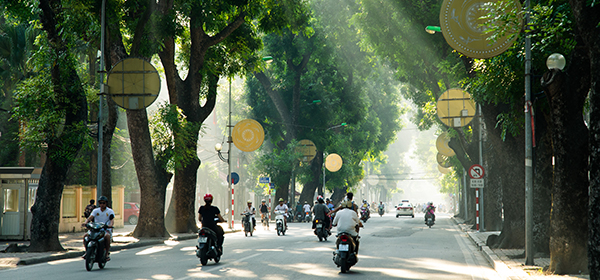
1. Chaotic Traffic
The traffic in Hanoi can be quite chaotic and overwhelming, especially for newcomers. The roads are often crowded with a mix of cars, motorbikes, bicycles, and pedestrians. The driving style of locals might seem aggressive and unpredictable to foreigners. Therefore, it’s crucial to stay alert and patient while driving.
2. Motorbikes are More Common
Motorbikes are the most common mode of transportation in Hanoi. They are more convenient for navigating through the heavy traffic and narrow streets. If you are comfortable riding a motorbike, it might be a better option than a car. However, if you prefer driving a car, a compact one would be recommended due to the narrow streets.
3. Parking Difficulties
Finding parking in Hanoi can be challenging, especially in the city center. Some areas have designated parking lots, but they can fill up quickly. Parking on the street is common, but it’s important to make sure you’re not blocking traffic or entrances. Parking fees are generally not expensive.
4. International Driving Permit
Foreigners can drive in Vietnam with an International Driving Permit (IDP) for up to 3 months. After that, you will need to obtain a Vietnamese driving license. It’s important to note that not all countries’ IDPs are recognized in Vietnam, so it’s best to check beforehand.
5. Obtaining a Vietnamese Driving License
To get a Vietnamese driving license, you will need to pass a written test and a practical driving test. The written test is available in English. You will also need to provide your passport, visa, current driving license, and a health check certificate. It’s recommended to contact a local driving school or the Department of Transportation for the most accurate information.
6. Respect the Rules
Despite the seemingly chaotic traffic, there are traffic rules in place and they are enforced. Make sure to familiarize yourself with the local traffic laws. For example, it’s illegal to turn right on a red light in Vietnam.
7. Be Prepared for Noise
Honking is very common in Hanoi. It’s used as a way to alert other drivers of your presence, rather than as a sign of aggression. It can be quite noisy, so it’s something to be prepared for.
8. Consider Hiring a Driver
If you’re not comfortable driving in Hanoi, hiring a local driver is a popular option. They are familiar with the traffic and the local driving style, and it can be a less stressful way to get around.


